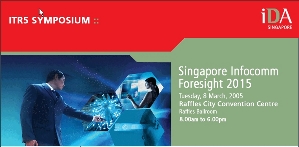After releasing .travel and .jobs (hey, steve.jobs up for bidding!), ICANN said they will look at .xxx and .asia next. (via Chiao)
VINT CERF: …OF THOSE, WE HAVE HAD FAIRLY EXTENSIVE DISCUSSION ABOUT .ASIA AND .XXX. WE CONTINUE TO EVALUATE THOSE. THE OTHERS WILL BE ATTENDED TO AS WE CAN GET TO THEM. BUT I WANT TO SAY FOR THE RECORD THAT WE WILL ATTEMPT WITHIN THE NEXT 30 DAYS TO COME TO A CONCLUSION ONE WAY OR THE OTHER ABOUT .ASIA AND .XXX SO THESE WILL BE ON A BOARD CALL SOMETIME WITHIN THAT PERIOD.
Chiao called .ASIA “more or less like a joint venture among APxx organizations”. I say bullshit! Don’t let appearance fool you.
The main person driving .ASIA is Cheng Che-Hoo (Hong Kong). Che-Hoo has a lot of respect and friends in the Asia Internet communty being former CEO of HKNIC, former executive in Level3 Asia, board of APNIC etc. But what most people don’t see is the whole excerise is underwritten by Afilias, including the ICANN bidding fee and most of the expenses incured. In other words, Afilias is trying to repeat their success with .ORG with .ASIA. (which btw, I highly doubt would be a commercial success being a sTLD).
But didn’t .ASIA have a lot of APxx supporting it? Well, yes. As I said, Che-Hoo is well respected here and many initial NICs who joined .ASIA are really giving Che-Hoo their support and not so much .ASIA per say. I know at least one NIC who got into some trouble after they signed the letter of support without their board approval; That’s how far people will go for Che-Hoo.
But subsequently, the tactic to get support is, hmm, how should I put this? Maybe let me describe how it works: .ASIA deal with the NICs is that if you support .ASIA, when registrations comes from your region, we will split the revenue of that registration with you. One way to look at it is ‘hey, profit sharing with the NIC! Good guy!’. But another way to look at this is “If I don’t support them now, I don’t get anything if someone from my region registered with .ASIA”.
So in other words, a perfect manuipulation in Game Theory – the NICs is put in a position where they cannot afford not to support it.
I admire Che-Hoo dedication and I marvel the tactic they used. But no, I strongly disagree .ASIA is a “joint venture” or “partnership” of Asia Pacific organization. Especially one that NICs join because they don’t have a choice and mastermind by someone outside the region.
.ASIA? Yes, lets do it really from Asia. And its do it properly and not play games.
ps: Let me state outright : This is not about anti-Afilias. My position on .ASIA has not changed since beginning of last year.
 SMU, working with my group in IDA, is organizing a public lecture by Dave Farber titled “The Technical and Societal Implications of Networking” on 22nd June.
SMU, working with my group in IDA, is organizing a public lecture by Dave Farber titled “The Technical and Societal Implications of Networking” on 22nd June.








